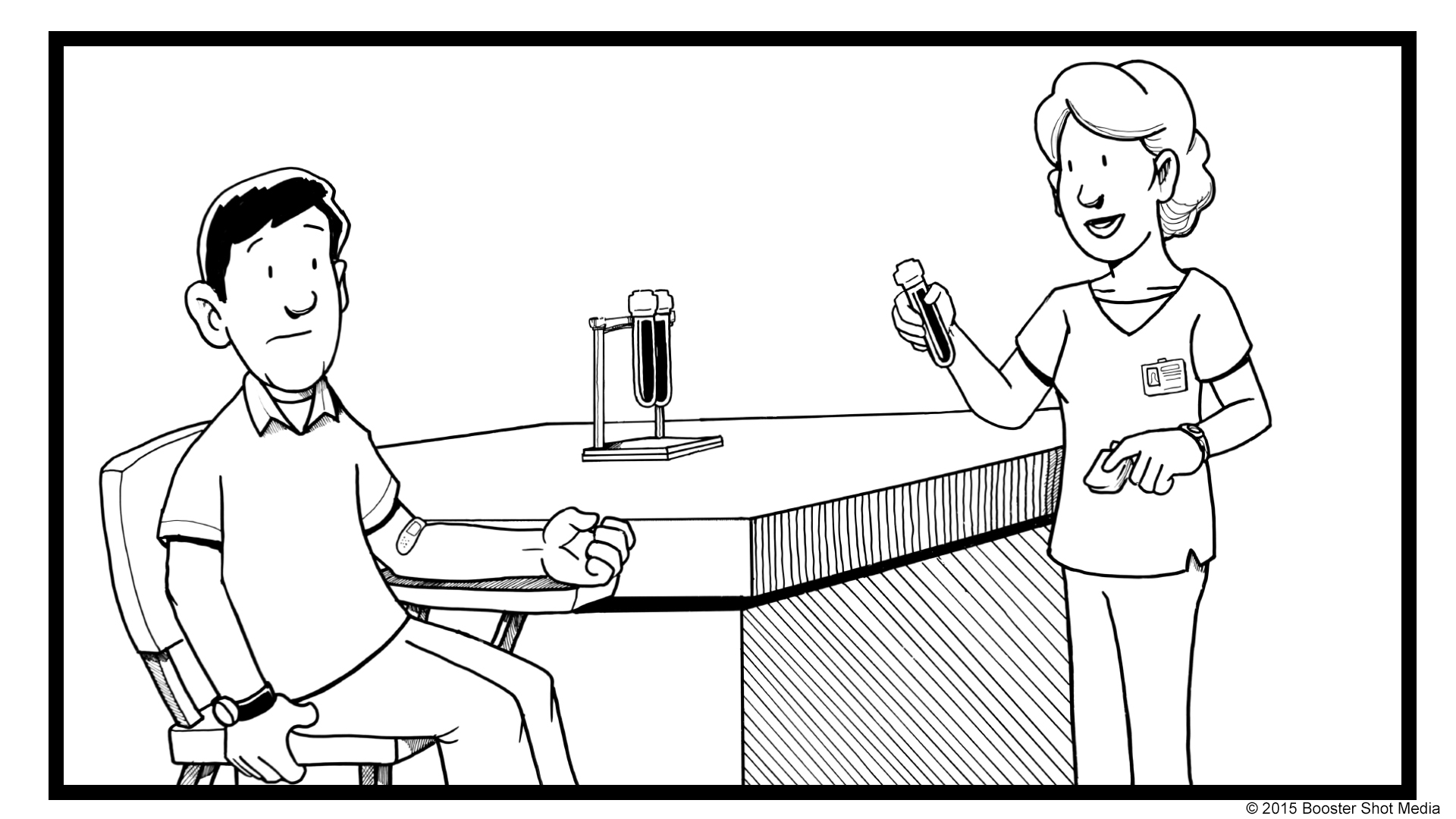
How to Study Participation in Precision Medicine
Background
Empirical research in bioethics is often conducted to determine individuals’ attitudes towards, and knowledge, beliefs and values about unfamiliar phenomena that require detailed description and explanation. Multimedia approaches such as narrated videos are potentially efficient communication aids to convey information about complex topics, especially in linguistically and culturally diverse populations. We describe here the development and use of animated videos in our mixed methods study of attitudes towards biobank research through focus groups of patients in a large healthcare system, drawn from racially- and ethnically-diverse populations.
Metaphor Choice: Language Matters
“Library of Medical Information” — The VALUES Study uses a library as a visual metaphor to explain the flow of patient information and physical samples in biobank research
Metaphors are often used to communicate complex scientific information. The choice of metaphors can transmit values, expectations, and assumptions. To assess how patients interpretat the commonly used metaphor of the biobank, we conducted a few initial focus groups and asked participants to describe what biobank meant to them.
After the initial focus groups, we decided to use a “library” as a metaphor. The metaphor seemed to have many features that worked for explaining next generation biobank research.
- Libraries store information and knowledge
- Libraries are used for research
- Libraries are a public good
- Community members voluntarily contribute to the library
- Books can represent individual records or samples
- Once donated, the book is owned by the library
- Librarians control access to the library
Video Development
The goal of the videos is to provide simplified illustrations capable of effectively conveying information across cultural and linguistic barriers. We aimed to produce materials that were consistent, yet also worked for the various cultural contexts and health literacy of patient participants. The development process included feedback from patients to adjust the content, tone, and visuals of the video.
Video Translation
After the English versions of the videos were complete, we produced versions translated into Spanish and Chinese. The goal was to achieve a linguistically and culturally appropriate translation. We conducted cognitive interviews with native speakers to revise storyboards. There were multiple challenges around the different translation written Chinese (simplified Chinese) and spoken Chinese (Mandarin).
Focus Groups
We conducted 20 groups of Palo Alto Medical Foundation patients (N= 122 participants; male = 56 and female = 66). The focus group sites were Palo Alto, Mountain View, Santa Cruz, Fremont, and Dublin. Each focus group represented one of the 5 populations below:
- African American
- Non-Hispanic White
- South Asian
- Chinese – English and Mandarin
- Hispanic/Latino – English and Spanish
For results from the Focus Groups, please see the results page.
Randomized Pragmatic Trial
Current, we are conducting a Randomized Pragmatic Trial at Sutter Health Network. Sutter Health is currently enrolling patients in “one of the largest efforts by a health system in the US to link genetic information to electronic health record data as a way to increase the pace of discoveries.” This is a community health system that reflects a rich diversity in urban and rural and racial and ethnic populations. The Randomized Pragmatic Trial is a nonhypothetical context to see what are the reasons for participating and how does willingness to particopate with oversight, trust, skepticism or belief in benefit.
For results from the Randomized Pragmatic Trial, please see the results page.